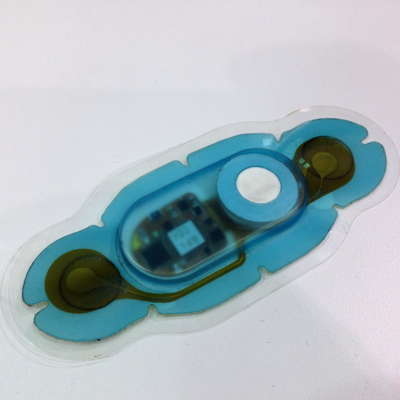
There are a lot of forces driving change in health care. In connectivity, device vendors are looking to workflow automation surrounding the device to grow their business and provide competitive advantage, while health care IT (HIT) vendors look for growth in diagnostic and therapeutic processes closer to the patient. To a great extent, they're going after some of the same markets.
Charles Fox is a clinical workflow expert who has spent years automating care delivery. Earlier today he sent me the following industry observations that I thought were particularly insightful.
There is an obvious tug-of-war in progress between HIT suppliers and medical device suppliers. For example, the infusion device suppliers are wandering into the IT space with server-based systems, gateways that are a proxy for the infusion device at the bedside. HIT suppliers are getting more serious about the infusion device business as well because it represents a piece of the care process they don't own.From my vantage point this is driven by several factors. Infusion pumps themselves are becoming a commodity and the size of the market is tending toward shrinkage. As infusion pumps get smarter they increasingly become part of the medication administration process and less like passive purveyors of medical data. Programmable infusion pumps create a special case in the connectivity space because they represent a combination of servers and systems with interdependencies that are not passive and can do real, direct harmto a patient.
The above cause a degree of panic among infusion system suppliers who see the handwriting on the wall, "...how do we grow when we don't own the medication process, and how do we manage the liability of introducing a programmable device into the medication process driven by orders in another system?"
There is a tendency for issues like this to put up walls between HIT and infusion system suppliers. Device suppliers can creep just so far into care delivery before they run into two major issues: how do you manage care process and workflow across dissimilar systems, and how do you decide who gets to be in control?
But some say this will all be solved by interoperability. It may be solved eventually but today device suppliers and to some extent HIT suppliers are disincented to implement interoperability because it immediately draws a line in the sand around their market.
So what is the solution? I guess I'm altruistic enough to think that a group of device suppliers could get together with a group of HIT suppliers and decide to "do the right thing" based on what is in the interest of safe and effective care. There are attempts from the device side in the form of IEEE 11073 and attempts from the care delivery side in the form of CIMIT…..with the FDA trying to shove them together. But this is another case of government having to force an issue because industry can't get their act together.
Government mandates are a handy explanation for stock analysts worried by a charge against earnings ostensibly due to government regulations….charges that are really due to shrinking market and failure to act.
Connectivity (or medical device integration if you're a HIT vendor) is not something you throw a product manager at and forget about. This is some serious strategic stuff. Another fact that Charles doesn't mention is that it's expensive too, way more than a few million dollars for a new product; especially if you screw up.
If you think about it, the big guys like GE, Siemens and Phillips have their fingers in both the HIT and the device industries. And as a rule, even they can't integrate within their own product lines. All that opportunity, and they can't get it together. There has always been, in my mind, an oil and water relationship between software and hardware folks even within the same company. Fundamentally they see the world differently. Companies that try to do both tend to be good only at one....and the other struggles. The hardware guys tend to be king of the mountain.Point is it may take the government to disrupt things.....but as is usual with government mandates, no one will like the outcome.....and the patient is lost in the dust.
Charles comes from the software side of things, where the hardware guys seem like the king. Ironically, the device guys think the HIT guys are king. Maybe these contrasting perspectives simply highlight the fundamental differences in the business models and interdependencies between software that runs on general purpose computers and software that runs on embedded systems.
What's needed is a new kind of company, a chimera that blends the best part of both HIT and medical device companies. One company that seems to be transforming themselves into something new and unique is Cardinal Health. Current business opportunities at and around the point of care are tremendous for a start up or an established company with the right kind of solutions. The kings that look so strong and capable today could be shadow of their former selves in a few short years.
Pictured right is the mythic chimera.



Recent Comments